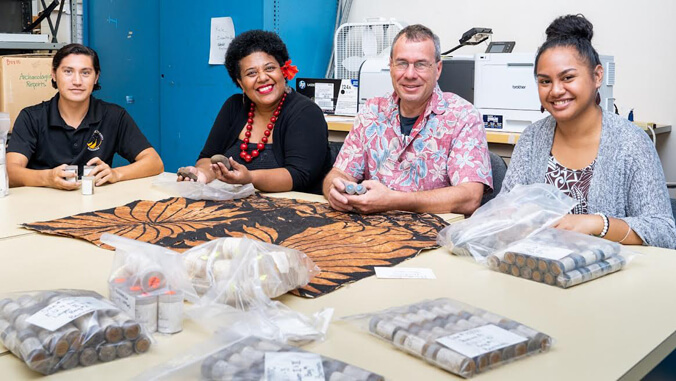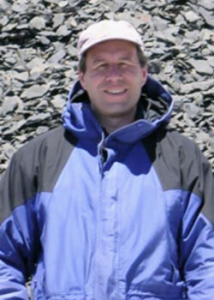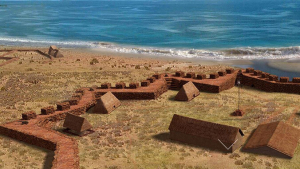
For his work including Pāʻulaʻula, a significant Hawaiian royal residence on Kauaʻi that was formerly known as the “Russian Fort Elizabeth,” the Society for Hawaiian Archaeology (SHA) has recognized University of Hawaiʻi at Hilo anthropology Professor Peter Mills with the 2022 Public Archaeology Award.
The award, which was presented during SHA’s convention held September 30–October 2 at the Bernice Pauahi Bishop Museum, recognizes individuals or groups who reach a broad audience in their local communities and seek to involve these communities in their archaeological efforts.
“What makes the award really special is that it reflects a central role for UH Hilo in sustained efforts to improve heritage management programs in the Pacific by reaching out to descendant communities,” said Mills. “I have greatly benefited from working with so many students with deep passions and connections to cultural stewardship.”

With this award, SHA recognizes the importance of playing an active role in public education concerning Hawaiian archaeology and disseminating research.
“By promoting understanding of Hawaiian cultural sites both for local people and visitors to the Hawaiian Islands, they encourage greater compassion and commitment to these significant places,” reads the SHA awards statement. “Raising public awareness of the importance of these places can help to discourage commercialism and to eliminate collecting, buying, or selling archaeological materials.”
Mills has been a faculty member in UH Hilo’s anthropology department since 1997. He has made profound positive impacts through his commitment to public-oriented scholarship, and has increased access to educational and professional training opportunities, particularly through the development of UH Hilo’s master of arts in heritage management program.
In particular, the Public Archaeology Award recognizes Mills’ work at Pāʻulaʻula, a significant Hawaiian royal residence on the southwest side of Kauaʻi that was commonly known as “Russian Fort Elizabeth” for the last century.

Mills’s work at Pāʻulaʻula extends back to his dissertation research at the University of California, Berkeley, which later developed into his book, Hawaiʻi’s Russian Adventure: A New Look at Old History. More recently, Mills and collaborators combined archival documents, maps, photographs and archaeological research to build three-dimensional models of the site and increase community engagement with Pāʻulaʻula.
“His efforts in bringing this history forward has played a role in re-shaping public understanding of Pāʻulaʻula,” noted SHA award statement. “This year, the Hawaiʻi Board of Land and Natural Resources voted unanimously to rename Russian Fort Elizabeth State Historical Park to Pāʻulaʻula State Historic Site. This decision is an important commitment to recognizing Pāʻulaʻula’s role in Native Hawaiian history.”
For more, visit the UH Hilo website.
—By Susan Enright

